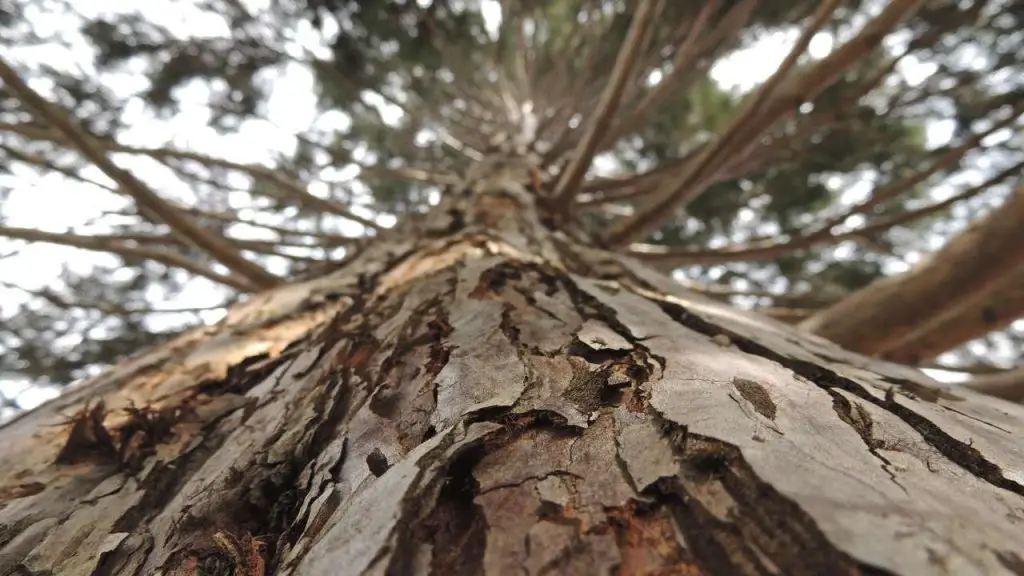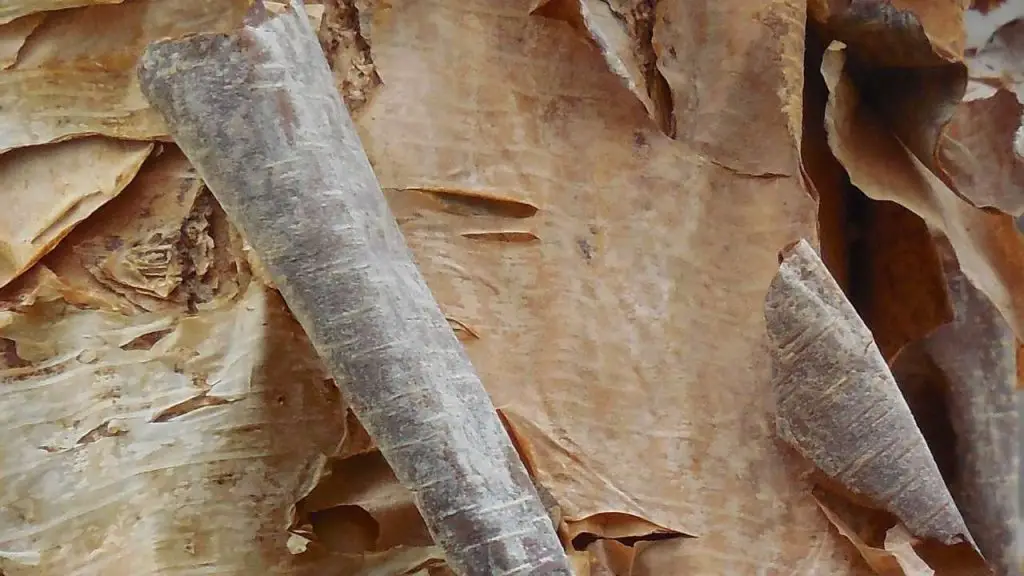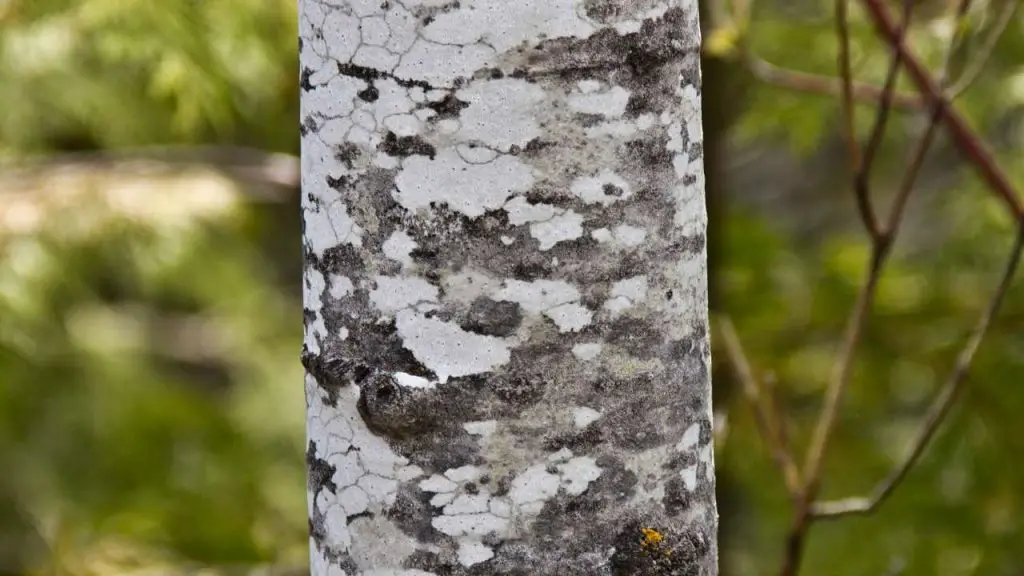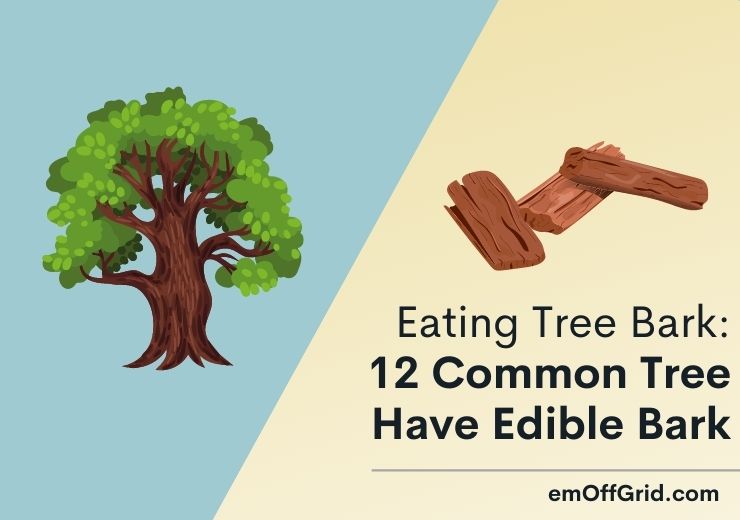Tree bark is one thing you will find in plenty in the forests. When you are surviving out there, you have to make use of everything you can find for food and water.
So, can tree bark be eaten by human beings? Let’s take a look.
It is known that most tree bark types can be eaten and provide a great source of calories for survival.
The problem, however, is that not all trees can be eaten. Certain types are poisonous. Such poisonous trees include Pacific Yew, Cherry, and Eucalyptus trees.
Which tree barks can you eat? We have done extensive research and have prepared this post to help you understand the basic ways to eat tree bark.
By the end of this post, you should be better equipped for survival situations. Here we go.
Contents
Is Bark Edible? What Does Tree Bark Taste Like?

Is tree bark edible? Yes. Not only is tree bark edible, but it will also provide your body with around 600 calories for each pound. Considering how easy it is to forage tree bark, it is quite nutritional.
The edible part of the tree bark is cambium and features some digestible starches, vitamins, sugar, and other minerals coupled with great levels of fiber to keep you going.
What taste should you expect? The taste of tree bark differs based on the specific species of the tree. Birch bark, for instance, is sweeter than most edible barks and is used for flavor because of its taste.
Pine, which is mostly available in most regions, is bland and a bit chewy when raw. Even when cooked, it is still a bit dull.
How Do You Gather Tree Bark?

When we talk about eating tree bark or finding food in the wood, most people think that we refer to the outer layer, which is not the case. It might be impossible to eat that outer layer because of the hard texture and feel.
The part you want to eat is the inner part, which is softer and more nutritious. If you want to harvest the bark, follow these simple steps.
First, you will need to find a healthy-looking tree. If you wait for a long time after the tree dies or is cut, then it will be harder to remove the bark.
After you find the right tree, you should create a small incision by cutting a small square through the part of the bark to the woody layer.
Next, you want to use a stick or knife to pry this outer layer and strip that inner layer using a knife.
You are after the second and third layers. These are the edible parts of the bark and are known as phloem and cambium respectively.
4 Ways to Eat Tree Bark
After you remove the bark from the tree, you will need to figure out how to eat it. As you would expect, tree bark is not the sweetest thing you can taste.
You can make use of several cooking methods to make tree bark easier to eat. You can choose to eat it raw but there are more ways than that. The four basic ways to eat tree bark are:
- Eating Tree Bark Raw
- Making Bark Flour
- Boiling the Bark
- Frying the Bark
Eating It Raw

Considering that you don’t have adequate supplies or time, you can choose to go this way.
You need to know that eating it raw might provide you with a calorie boost for a rumbling stomach but is not the best way to get the calories in the body.
Be ready to work out your jaw and spit out some fibers that cannot be eaten.
Making Bark Flour
This process is much better because it provides you with a wide range of ways you can enjoy the bark. First, you will need to dry it over a bit of fire and grind it.
You can use a couple of rocks, a blender, or a food processor handle if you have one. You can use the flour to add some nutrition to the game you catch or simply make some cookies.
Boiling the Bark
If you have some fresh water and a pot, you can make a fire and boil the bark. All you have to do is shred or cut the bark into strips and use them to make some thin soup; something closer to pasta.
The boiling process is great because it makes the bark easier to eat.
Frying the Bark
For this process, all you will require is a frying pan and some oil, and you are ready. Pop the bark strips in the pan, add a layer of oil on both sides and fry it.
The results will feature a jerky texture and will be similar to potato chips in terms of flavor and texture.
12 Common Trees That Have Edible Bark You Can Easily Find
The wild is filled with many tree varieties that have edible barks. These are trees that are not poisonous to your body and will provide you with adequate calories to help you push through for more hours.
They all have different flavors, textures, and aromas. Some of the trees’ bark that you can eat include:
- Pines
- The Beech
- Slippery Elm
- Black Birch
- Yellow Birch
- Red Spruce
- Black Spruce
- Balsam Fir
- The Sugar Maple
- The Mulberry
- Poplars
- The Willows
Let’s take a look at these trees in detail:
Pines
The pine tree is one of the most common types of trees. You can easily identify a pine tree with cones and needles.
It features a cambium that is similar to chewing gum. When you harvest pine, the best way to eat it would be to make bark flour for different purposes such as making cookies.
EARTHBORN ELEMENTS Pine Bark Extract
- Earthborn Elements 200 Pine Bark Extract Capsules
- Our Pine Bark capsules come from Pinus Massoniana
- Pure & Undiluted: Never any additives or fillers
The Beech
You can easily identify the beech tree by its hard green leaves and yellowish beech nuts. The nuts and leaves are also edible.
The beech tree bark is enjoyed best when fried or even when boiled. The taste can depend on how old the tree is.
Slippery Elm
The slippery elm is identified easily because of the slippery bark. It is known to have different medicinal qualities and can treat hemorrhoids or sore throats.
To get the best out of the slippery elm bark, simply consider boiling to get all the nutrients and medicinal aspects of the tree bark.
Black Birch
The black birch tree is categorized by the white to gray bark.
The bark is sweeter and the texture is favorable compared to most tree barks. The easiest way to enjoy the tree bark is to make flour for the improvement of other meals’ flavors.
This tree bark has been used in making birch beer. Adding it to some things like soup or dried grains is also recommended.
Yellow Birch
The yellow birch features a yellowish color. Apart from the color, there is not much difference between this tree and the black birch.
The flavor is simply as good as the black birch. You can easily eat and enjoy it raw. Alternatively, you can make some flour or boil it.
Red Spruce
Red spruce trees have yellowish-green needles with cones that have a length of around 1.5 inches. These cones are woody and reddish-brown.
The needles on the red spruce are used to make some hot tea. Once integrated into the tea, it gives a slightly sweet, resinous, bitter flavor.
Black Spruce
The black spruce features some short needles, shorter than the red spruce needles.
These needles are attached to branches individually and not in clusters. You will also notice that these needles have four sides and not two.
You can use the bark of a black spruce tree for flavoring because of its sweet taste.
That means that the best way to use them is to make some thin soup by boiling or simply make flour that can be used to improve the flavor of other meals.
Balsam Fir
The balsam fir tree has flattish needles with a length of around 1.5 inches. These needles are green at the top and whiter at the bottom. The twigs are smooth and not rough like hemlock trees.
The tree does not have great taste. However, it will give you more calories. You can use twigs and needles to make tea after boiling. The bark, on the other hand, would work better if fried.
Read more: https://pfaf.org/user/Plant.aspx?LatinName=Abies+balsamea#
The Sugar Maple
You can identify this amazing tree with the slightly notched, distinctive, three-lobed types of leaves. Its bark is almost black.
Different parts of the sugar maple are edible including the sap. The bark, however, can be cooked or eaten raw. They can even be roasted to provide the most amazing flavor to your food.
Read more: https://www.americanforests.org/article/edible-trees-foraging-for-food-from-forests/
The Mulberry
This type of tree features a rounded crown coupled with a short trunk. The tree also features some fruits.
You can eat most parts of the tree including the twigs. The easiest way to go is to boil or simply eat it raw. The bark is tender and somehow sweet.
Poplars

The easiest way to identify this tree is the lenticels that you notice on the bark. They look somewhat like rough growth.
The poplar tree is known to have a starchy, sweet bark that can be enjoyed cooked or raw depending on what you prefer.
There is also an option to cut the bark to trees and grind it to some flour for a source of carbohydrates.
The Willows

Leaves on the willow tee are wide, smooth, shiny, and non-lobed. They also have some fine teeth on the edges.
You might not like the willows because they have a somewhat bitter flavor. However, if it is for survival, beggars can’t be choosers.
To enjoy the inner bark of the willows, simply eat it raw or cook it like spaghetti in strips. Grounding it into flour is also possible.
Some Trees With Inedible Or Poisonous Tree Bark
Even though many trees have edible barks and other parts, some are simply poisonous.
While you learn about those that you can enjoy eating, you should be careful to avoid those that would cause serious harm or even death.
There are many poisonous plants. Here are three poisonous woody plants that should not be eaten:
- Wild Cherry Trees
- Pacific Yew Trees
- Eucalyptus Trees
Wild Cherry Trees
Wild cherry trees are recognized by the fruit and the white flower bunches.
All parts of this tree are poisonous. The fruit can be eaten but only when it is fully ripe. The seeds, leaves, and bark of the tree feature cyanogenic glycosides.
Pacific Yew Trees
The tree will grow to around 30 feet and can be identified easily with red berries, seed cones, as well as thin leaves.
Unfortunately, this tree features alkaloid toxins that might result in cardiac issues. It is toxic to both animals and humans.
Eucalyptus Trees
The color of the eucalyptus tree is anywhere from red to rainbow color. The fragrance is easy to identify.
This tree features fragrant oil. It is the reason for its amazing smell. Unfortunately, this oil will cause different illnesses. If the bark or leaves are eaten, nausea, vomiting, and diarrhea may occur.
Warning
Pregnant women should stay away from products related to pine. That is because it is too strong.
You should also know that you cannot just eat tree bark. Additionally, eating too much of it will bring about an upset stomach.
Fun Facts
Pine bark bread was a specialty in Sweden and Finland for centuries.
There is a tribe in the mountains of upstate New York called the “Adirondack” and that name translates to “bark eaters” from the Iroquois language.
Finally, I think we don’t know if all plants are edible or not. Look around and observe animals such as birds, squirrels, or rodents. I still believe that what animals can eat, we can also eat.
In Conclusion
There is a very wide range of trees out there. Some are very popular because of their medicinal purposes while some are simply meant to be avoided because of the toxins.
Anyway, some will not only keep you alive but make sure that you have some taste left in your mouth. You should be very careful when it comes to eating tree bark.
A learning curve is involved. You cannot just go into the forest and start harvesting barks for eating.

